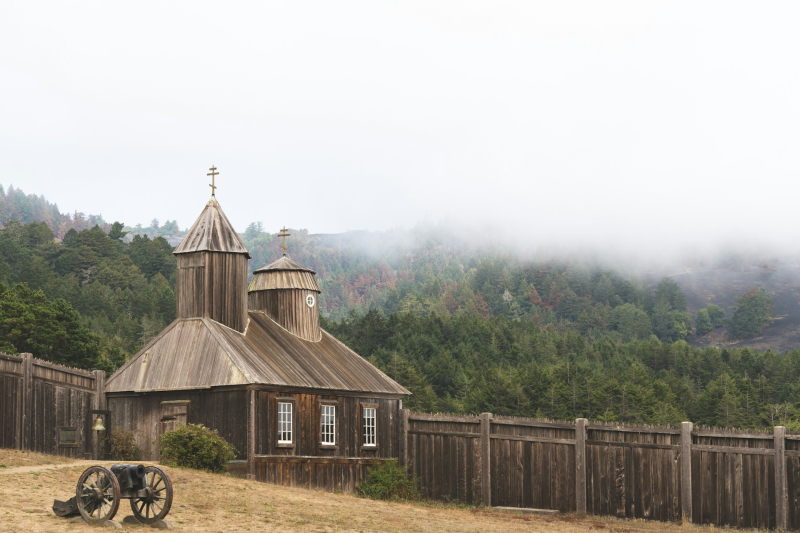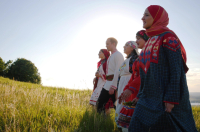Fort Ross State Historic Park, California, USA
Did you know that in the 19th century, the Russian Empire staked its claim on the west coast of North America? Few traces survive of these colonies nowadays, and one of the most notable ones is the town of Fort Ross, along with the eponymous state park, on the coast of California. Inhabited by Native Americans, Russians, Finns, and Swedes, it was established in 1812 and soon grew into a fur-trading hub. But, just as quickly, its luck turned – and within 30 years, it was sold to a Swiss entrepreneur.
The Kuskov House and Russian Chapel in Fort Ross, CA. Credit: Frank Schulenburg / Wikimedia Commons / CC BY-SA 4.0 DEED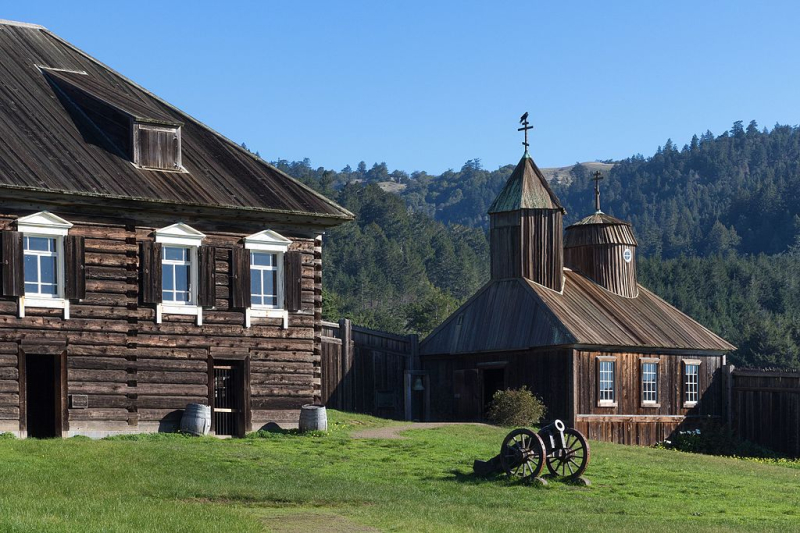
Still, a legacy remained: today, the park is home to a reconstructed copy of the original Russian village, complete with a windmill and a church. Several years ago, one of our students even visited the compound as part of a US-Russian educational forum.
Collection of the Russian Museum, Malaga, Spain
The Tabacalera complex in Malaga, Spain is home to the city's Russian Museum branch. Credit: Hans Porochelt / flickr.com / CC BY-NC-ND 2.0 DEED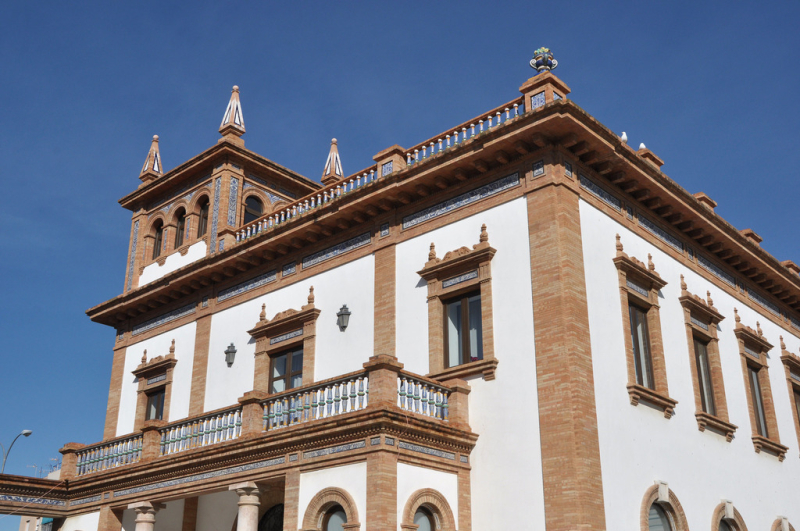
We at ITMO.NEWS love the Russian Museum – along with the Hermitage, it is one of the most impressive places in St. Petersburg for art lovers and regular tourists alike. But if you find yourself gallivanting through Europe, you, too, can experience it for yourself. In 2015, the city of Malaga in Spain became home to a branch of the Russian Museum. The venue exhibits works by historic and modern artists from both Russia and Spain, as well as organizes regular screenings of iconic Russian films and various lectures and discussions.
Russian Chapel, Vršic Pass, Slovenia
The Russian Chapel. Credit: Melanie Erhard (CosmoShiva) via Pixabay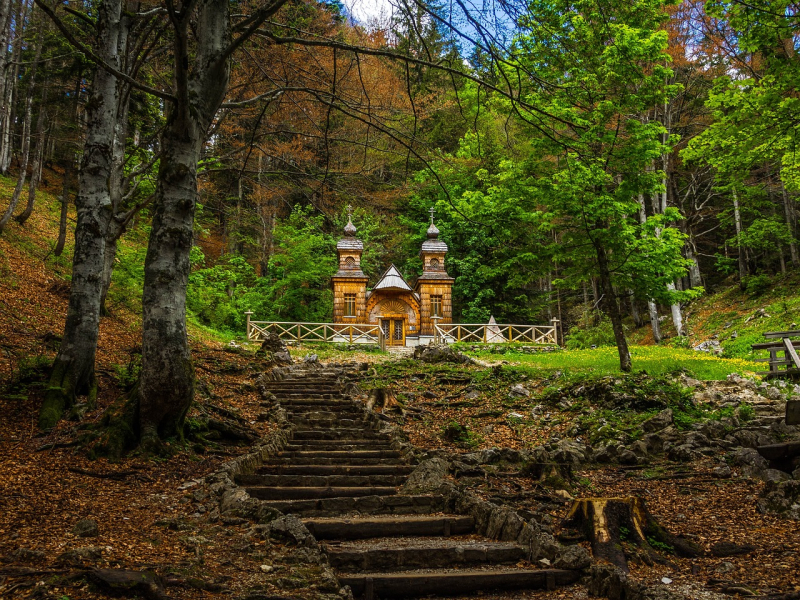
Beneath one of Slovenia’s highest mountain passes, not far from the borders of Italy and Austria, stands a curious structure – small in stature, but grand in appearance. This is the Ruska kapelica, or Russian Chapel, built by Russian prisoners of war during World War I. Tasked with building a road through this section of the Alps, they erected the small wooden chapel as a place to pray – and as a monument to fallen comrades.
Russian Bishop's House, Sitka, Alaska, USA
A dining room in the Russian Bishop's House, Sitka, AK. Credit: Jrozwado / Wikimedia Commons / CC BY-SA 4.0 DEED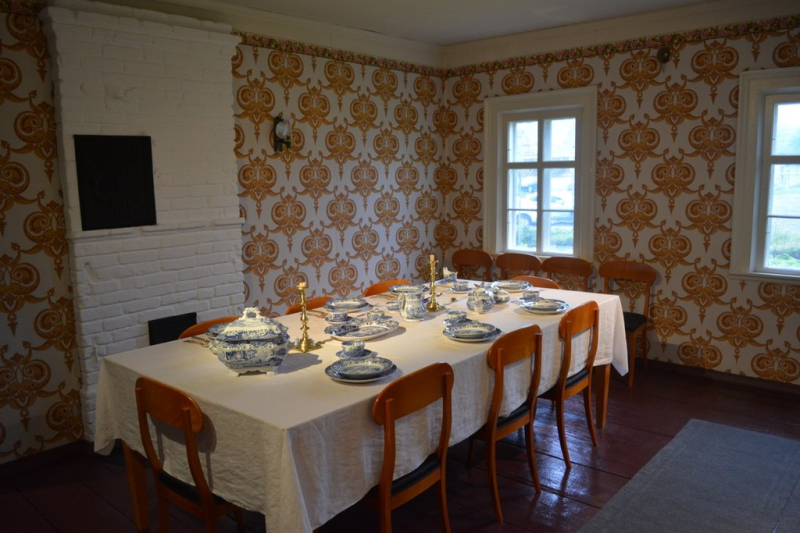
Another artifact of Russian history in the continental United States, this unassuming house in Sitka, Alaska is actually a protected building that traces its origins all the way to 1843. It was originally built as the residence for the wonderfully-named Bishop Innocent, at a time when the city still bore the name of New Arkhangelsk – in reference to the Russian northern port city. Today, the house retains its historic interiors and is open to the public on free guided tours.
Russian Compound, West Jerusalem, Israel
The Holy Trinity Cathedral. Credit: Noam Chen for the Israeli Ministry of Tourism / flickr.com / CC BY-ND 2.0 DEED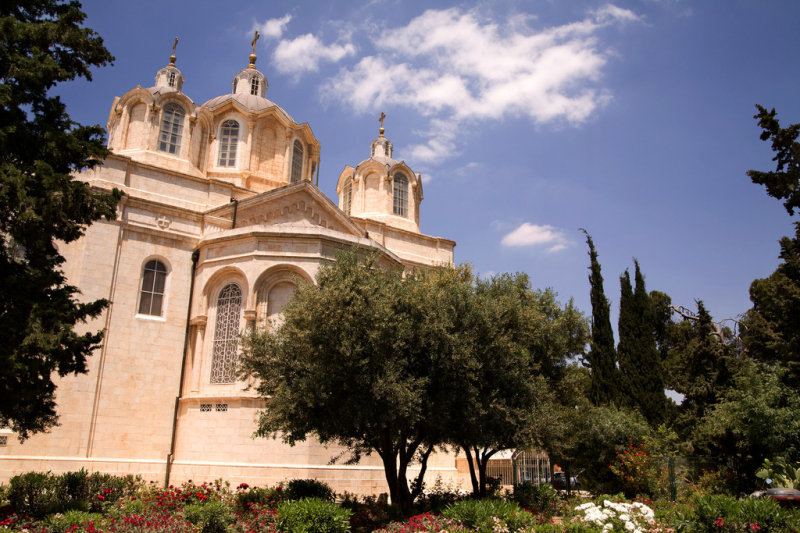
Contrary to what you might imagine, the sprawling size of modern-day Jerusalem is a fairly recent development: until the mid-18th century, this site of international pilgrimage was contained within the walls of its Old City. And so, despite its antique appearance, the Russian Compound was actually one of the very first districts to be built during that period of expansion.
Points of attraction here include the Sergei Courtyard, featuring fortress-like edifices and a tranquil garden – in olden times, the place served as a hostel for noble Russian pilgrims – and the Holy Trinity Cathedral, its appearance bringing an unusual touch of Byzantine Revival architecture to the city’s ancient look.
St. Alexander Nevsky Cathedral, Sofia, Bulgaria
St. Alexander Nevsky Cathedral in Sofia, Bulgaria. Credit: Ivan Nedelchev (@inedelchev) via Unsplash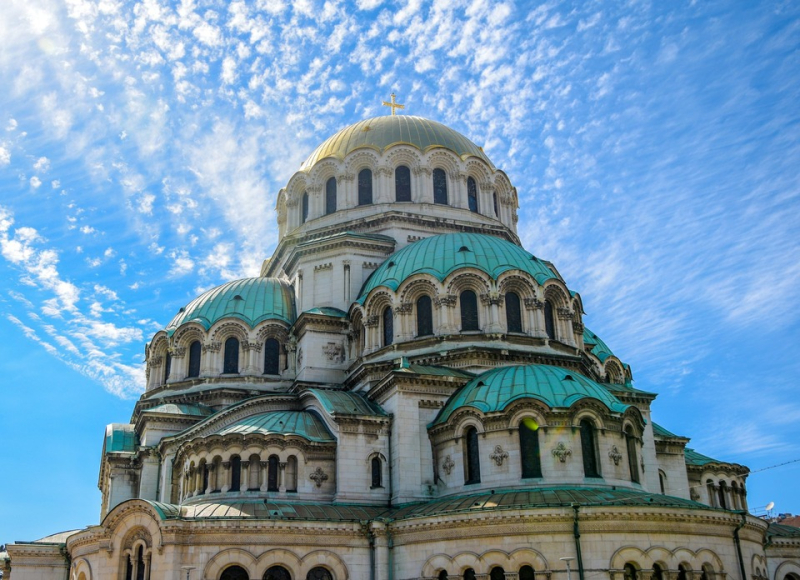
In the heart of the Bulgarian capital, an imposing building stands as a symbol of historic events: the liberation of the Balkans from Ottoman rule during the Russo-Turkish War of 1877–1878. Constructed to honor the Russian casualties of that war, the cathedral was built over a span of 30 years, with its delicate decorations sourced from different corners of Europe. Interestingly, the building boasts seven near-identical, though much smaller, “siblings” all across Bulgaria.
For more information about top tourist destinations, check out our guides to St. Petersburg and other destinations across Russia.
